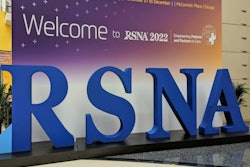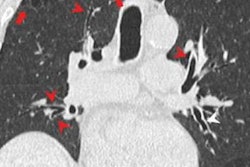
Further expansion of current low-dose CT (LDCT) lung cancer screening recommendations would increase the number of women and Black individuals who would benefit, according to a study published October 5 in the Journal of Thoracic Oncology.
Why? In part because women and Black people tend to develop the disease at younger ages and at lower levels of tobacco exposure, corresponding author Dr. Raymond Uyiosa Osarogiagbon of the Baptist Cancer Center in Memphis said in a statement released by the International Association for the Study of Lung Cancer (IASLC).
"[Our study validates] the notion that adoption of USPSTF 2021 [guidance] can increase access to Black persons and women and also provides evidence that a further reduction in smoking exposure criteria should be considered," he said.
There's long been concern that CT lung cancer screening eligibility is negatively affected by racial and sex-based health disparities, especially since eligibility criteria has largely been based on the risk factors of white men. A team led by Dr. Matthew Smeltzer explored how adding additional factors to lung cancer screening could expand its benefit via a study that included 17,421 people and used data from an initiative Baptist Memorial Hospital has conducted since 2015 called the Incidental Lung Nodule Program.
Smeltzer and colleagues assessed five different lung cancer screening protocols for potential increased benefit for women and Black individuals:
- USPSTF 2013 guidance -- individuals start screening between the ages of 55 and 80 and report ≥ 30 pack years of smoking and ≤ 15 years since stopping smoking.
- USPSTF 2021 guidance -- individuals start screening between the ages of 50 and 80 and report ≥ 20 pack years of smoking and ≤ 15 years since stopping.
- Quit smoking duration expanded to ≤ 25 years.
- Reducing pack years of smoking to ≥ 10.
- A combination of USPSTF 2021 criteria, quit smoking duration ≤ 25 years, and pack years of smoking of ≥ 10.
The authors found that the USPSTF 2021 guidance boosted lung cancer screening eligibility by 30% compared with the 2013 recommendation. But adding the other factors increased both the eligibility pool and the number of lung cancers detected.
| Effect of further expansion of lung cancer screening eligibility guideline | |||
| Measure | USPSTF 2021 guidance plus pack years of smoking of ≥ 10 | USPSTF 2021 guidance plus quit duration of ≤ 25 years | USPSTF 2021 guidance plus quit duration of ≤ 25 years and pack years of smoking of ≥10 |
| Additional individuals eligible for lung cancer screening (compared with USPSTF 2013 guidance alone) | |||
| Black people | 31% | 25% | 29% |
| Women | 57% | 53% | 55% |
| Number of lung cancers identified (compared with USPSTF 2021 recommendation alone) | |||
| Black people | 20% | 21% | 21% |
| Women | 50% | 51% | 50% |
Of those newly eligible for lung cancer screening with the addition of these factors, 57% were women and 24% were Black individuals, the group reported.
The study underscores the fact that, to truly mitigate healthcare disparities in lung cancer screening, policymakers need to consider race-based modifications of smoking history, according to Smeltzer and colleagues.
"The opportunity to bend the U.S. population-level lung cancer mortality curve downwards requires ongoing studies to fit screening eligibility criteria to reflect the populations that truly are at risk for lung cancer," they concluded.





















